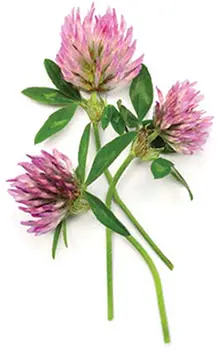
From Eurasian Fields to Symbol of Prosperity
Red Clover, scientifically known as Trifolium pratense, is a perennial plant native to Eurasia. It is distinguished by its rose-colored flowers and trifoliate leaves, which have given rise to its genus name. Beyond its ornamental value, Red Clover serves an important ecological role as a cover crop, enhancing soil health and serving as a nutritious fodder for farm animals. The phrase “in clover” aptly describes a life of comfort and prosperity, reflecting the plant’s abundant and flourishing nature.
Historical and Cultural Significance
The historical use of Red Clover spans various cultures and centuries. In ancient China, it was revered as incense burned at altars. Medieval Christian symbolism linked the plant’s three-part leaves to the Holy Trinity. Moreover, Red Clover has a longstanding association with cancer treatments, particularly in breast, ovarian, and lymphatic cancers. Adding to its cultural significance, it was designated as the state flower of Vermont in 1895, underscoring its regional importance.
Therapeutic Uses of Red Clover Flower Essence
In the realm of herbal remedies, Red Clover flower essence is valued for its ability to reinforce a sense of self in the face of overwhelming collective consciousness. It promotes self-awareness and helps individuals stay grounded in their personal truth. Especially beneficial during crisis situations, this essence fosters a calm and centered demeanor. It is also sought after for its cleansing and balancing properties, making it a versatile component in natural healing practices.
Red Clover is not just a plant with aesthetic appeal; it embodies a rich tapestry of cultural, historical, and medicinal significance. Its journey from ancient rituals to modern herbal practices highlights its enduring appeal and versatility, offering insights into a plant that has been a source of healing and symbolism throughout the ages.
